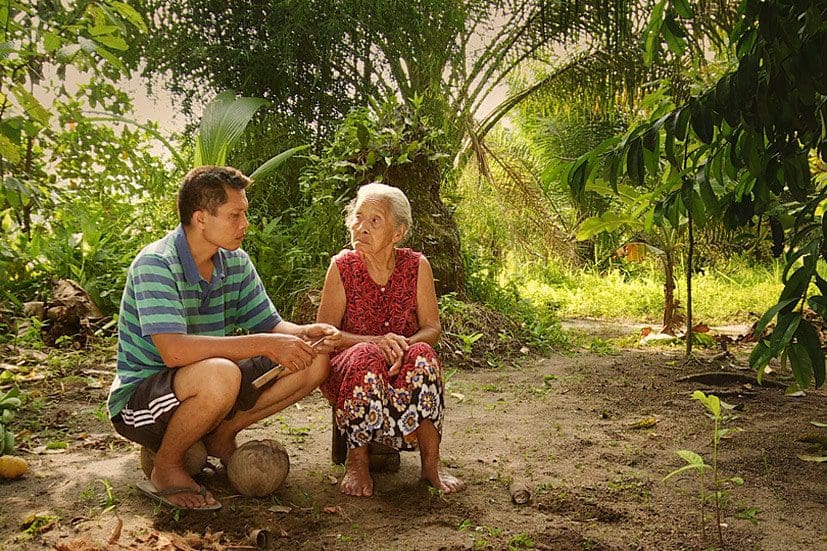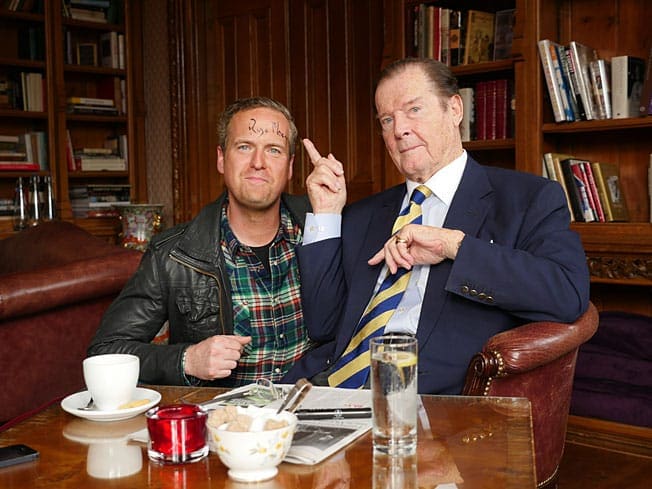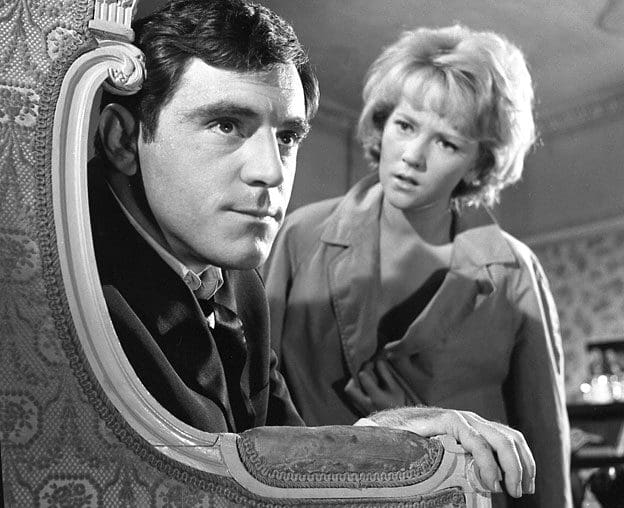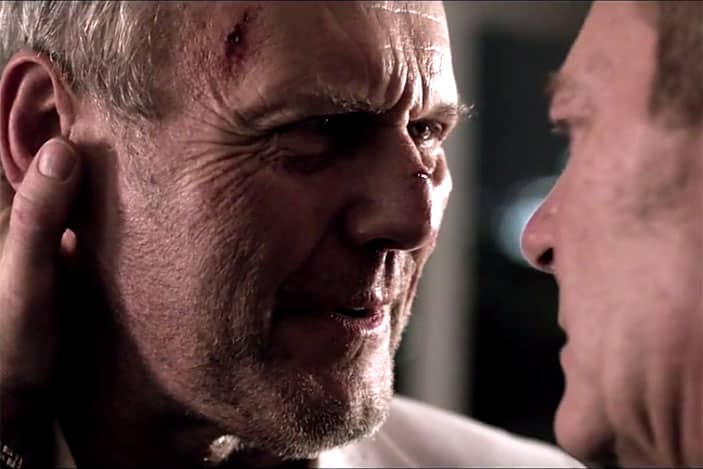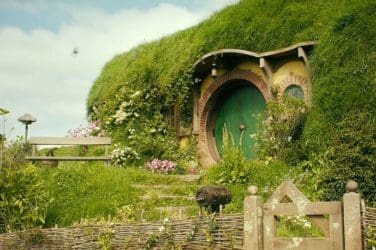words Christina Brennan
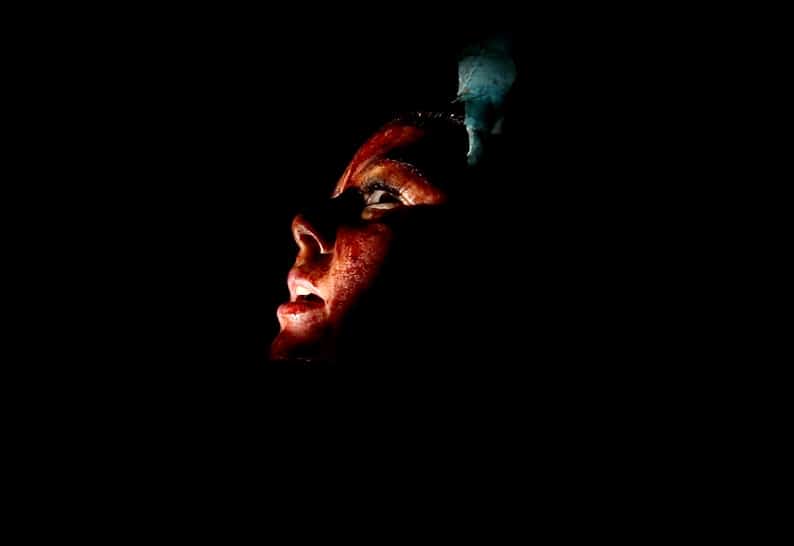
Found-footage films are predictable fare for seasoned horror fans. When Robbie Banfitch’s The Outwaters started making the rounds on the festival circuit in early 2022, the low-budget film seemed to promise the same claustrophobic scares that catapulted films like The Blair Witch Project, Paranormal Activity, and Cloverfield into the public eye.
Like these films, The Outwaters confines its viewers to the jarring perspective of the hand-held camera. Its strange and twisted setup plays out with a typical set of found-footage characters, a group of young people and campers who travel to the Mojave Desert in the southwestern U.S. to film a music video. Brothers Robbie (Banfitch) and Scott (Scott Schamell), along with friends Michelle (Michelle May) and Angela (Angela Basolis), ignore the obvious dangers of one of the driest and hottest regions in the U.S. and trek deep into the desert, miles away from safety and rescue.
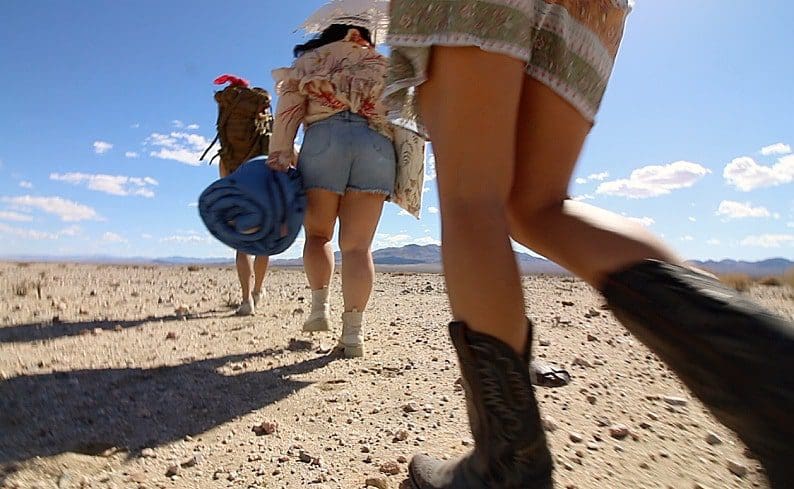
When The Outwaters starts, it embraces the ‘you are watching a true story’ gimmick that has become synonymous with found-footage horror. It opens with a scream-filled 9-11 call pleading for help. The title card tells us about the characters’ disappearance in the Mojave Desert and the recovery of three memory cards five years later. The film plays raw footage, establishing a light-hearted, loose structure that lulls the viewer with its comforting realism. Robbie, Scott, and Co are at home, recording random fragments of goodbye preparations and partying ahead of their travels. These early sequences cut to the first stages of the trip, where only murmurs of trouble disturb their travels. The desert nights are haunted by loud booming thunder and small earthquakes. Other chilling sights flit into the shots – a discarded axe near the camp, anonymous figures wandering the horizon, and erratic behaviour from desert snakes and animals. There is an unnerving pause before the film’s final half, with the friends visiting home before returning to the desert. Then, one night after their return to the desert, events take a more gruesome turn.
Whether The Outwaters is one of the scarier found-footage films will be down to a film watcher’s taste, endurance, and stomach. It is entirely subjective. But whether viewers think it matches the eerie power of grainy, suggestive shots in The Blair Witch or the more visual, adrenaline-immersed effects of Paranormal Activity, it’s hard to deny that The Outwaters entangles its characters in new, grisly dilemmas. Typical found-footage films narrow their focus as the tension escalates, with camera shots becoming more fragmentary as threats creep closer and closer. The Outwaters takes a different tack. Shot by shot, the landscape becomes grander and more wide-scale. The contrasts of the desert are a source of relentless, visceral horror in The Outwaters. On a surface level, the glaring light of radiating daytime sunshine contrasts with the impenetrable shadows of the unlit Majove nighttime. On a deeper level, there are references to the desert’s history as the site for nuclear testing facilities, and radiation fallout from these tests is an implicit cause for unfolding events on this desolate landscape.
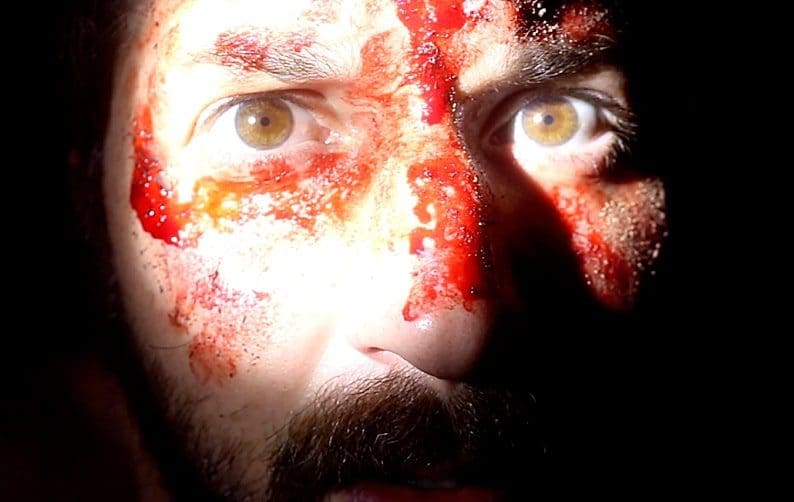
Any director telling such a story could squeeze some suspense out of this backdrop. But Banfitch is interested in more than a straightforward sequence of events. The unfolding nightmare scenario within Banfitch’s screenplay pushes things into the sphere of otherworldly, disorienting wonder. The camera does not share or reveal a direct or chronological version of events as Robbie and his craw scrabble about in the nighttime desert and lose their sense of reality and memory. The camera lingers on seemingly random objects and meditates on eerie shadows thrown across the sand. This realism is interrupted by psychedelic moments that intensify throughout the film. The bright disorienting strobes of light in the daytime desert make you feel like the camera is hallucinating, capturing flashes of bloody and violent figures who circulate and move in on the group. It all shares with the viewer the sense of being lost in something impenetrable, forbidden, a nightmare that won’t end and is continually repeating itself.
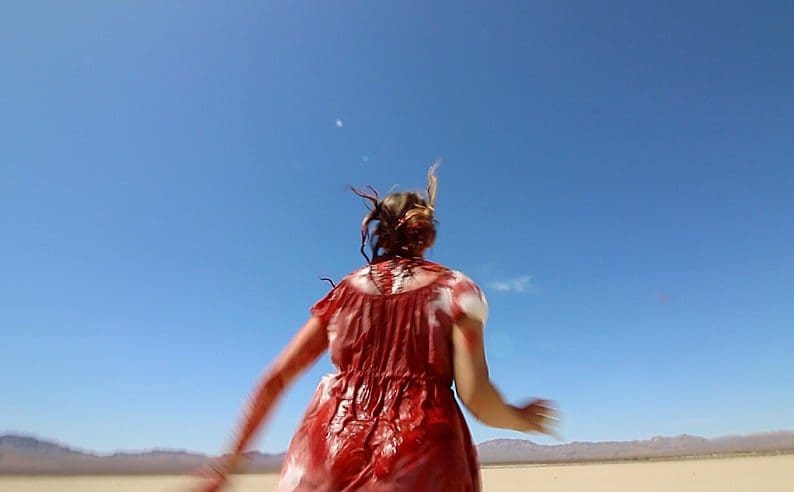
This is not to say The Outwaters has no sense of focused or intensifying suspense within the film. Against the sparse, boundless landscape of the Mojave Desert, Banfitch builds the visceral power of his story in lengthy and disjointed pieces. The OutWaters’ acoustics are, like its cinematography, intentionally disorienting. There is no immediate or obvious threat in The Outwaters. If there is a villain, it is a brooding supernatural-like force that haunts the desert. Horror in The OutWaters is characterised by noise. The sound design is nearly as important as the film’s cinematography, and the palpable noises, screams, and booms reflect the extreme visuals to disorientate the viewer. To say any more would spoil the oddly mysterious power of The Outwaters. Still, when the film ramps up the tension, it really doesn’t let go before it reaches a finale that any viewer would find horrifying, even if watching in broad daylight.
For fans of found-footage horror, this will be enough. The Outwaters is not gleefully experimental in the style of COVID-19 lockdown films that transported supernatural horrors onto Zoom. Yet The Outwaters still subverts more conventional narrative arcs and favours a darker, more unpredictable approach to gradually uncovering danger in the Mojave Desert. If you’re willing to wait with Banfitch and his crew as night falls over the desert, you’ll experience a twisted view of familiar primal fears. Found footage films are clichés of horror cinema, but The Outwaters demonstrates that the haunting adaptability of this low-budget horror can still dial up the tension for an unforgettable experience.
The Outwaters is in cinemas 7 April and on digital 8 May

